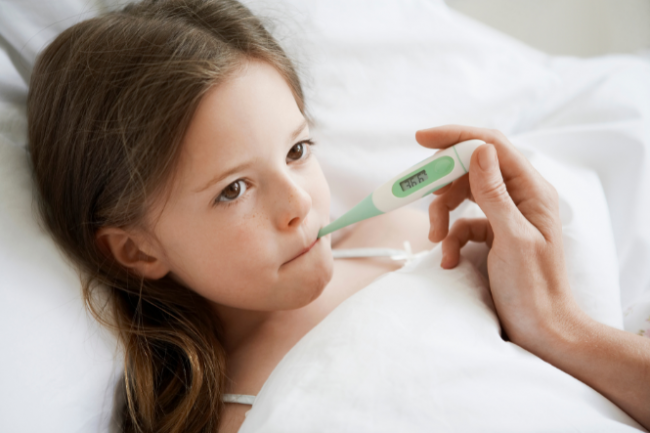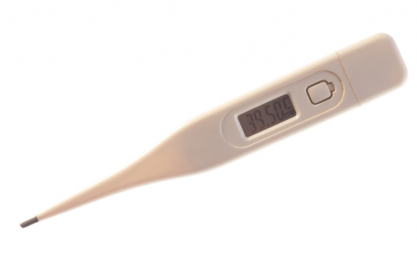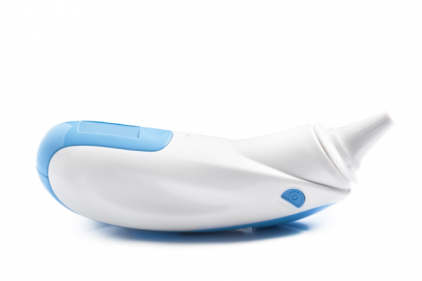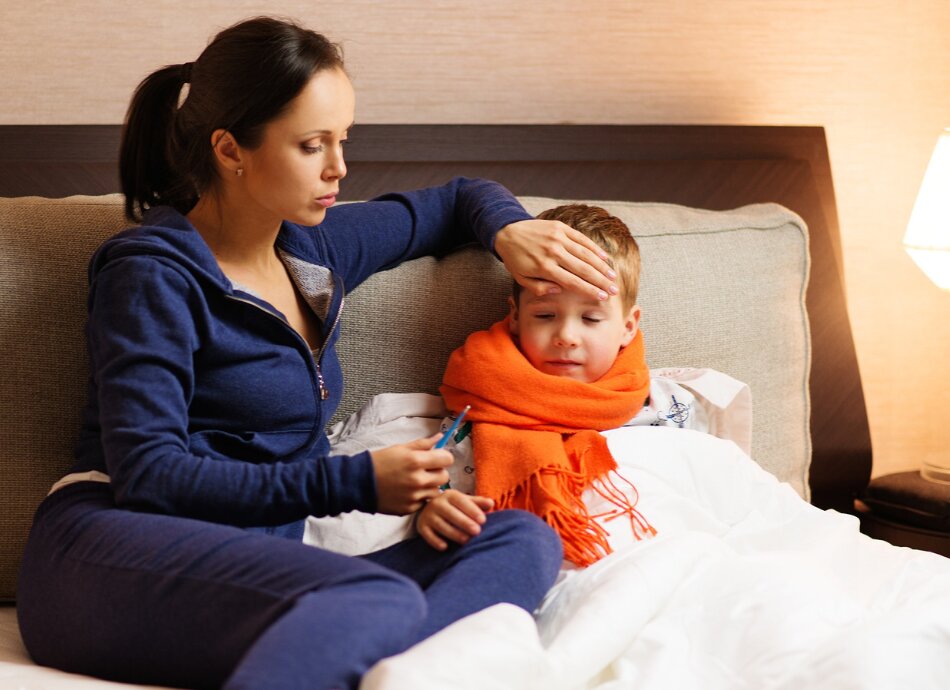You can use a digital thermometer for adults and children of any age. A digital thermometer gives a digital reading. There are a number of brands. You need to read and follow the instructions that come with your thermometer. It is useful to keep a written record of temperature readings so that you can see if there is any change over time. It is also helpful information to give to your healthcare provider if you seek medical help.
Children under 5 years: use a digital thermometer under your child's arm
If your child is under 5 years, you can use the digital thermometer under your child's arm. If you measure the temperature under their arm, it records about 0.5–1 degree Celsius lower than the core temperature.

Image credit: Canva
Follow these steps to use a digital thermometer under the arm (the axillary temperature).
- Turn it on (these thermometers usually have a button you press to turn on).
- Place the end in the armpit against the skin, and bring your child's arm down over the top of it – it often helps to hug your child to keep the arm down and the thermometer in place.
- Most thermometers beep when they have finished measuring your child's temperature so wait for the beep.
- Note that some thermometers also beep while measuring and the beep changes when the thermometer has finished measuring. To avoid confusion, it is worth keeping the thermometer in place for 2 minutes.
- Remove the thermometer and read the number on the side - the temperature you read is about 0.5–1 degree Celsius lower than your child's actual body or core temperature.
Adults and children 5 years and older: measure their temperature in their mouth
In adults and children 5 years of age or older you can measure the temperature in their mouth (the oral temperature). Make sure you only use a digital thermometer in your child's mouth.

Image credit: Canva
Follow these steps to use a digital thermometer in the mouth for older children. It is important that your child can cooperate, which usually means they need to be aged 5 years or older.
- Turn the thermometer on.
- Place the end in the mouth under the side of the tongue – try to get your child to keep it there.
- Most thermometers beep when they have finished measuring so wait for the beep.
- Note that some thermometers also beep while they are measuring and the beep changes when the thermometer has finished measuring. To avoid confusion it is worth keeping the thermometer in place for 2 minutes.
- Remove the thermometer and read the number on the side – the temperature you read in in degrees Celsius is close to your child's actual body or core temperature.











